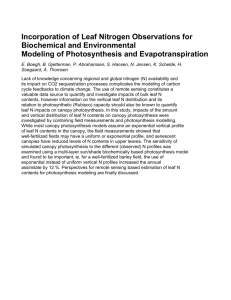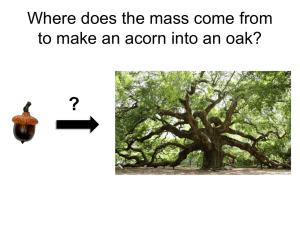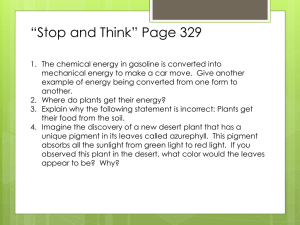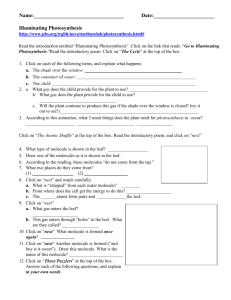Photosynthesis Internet Activity Name: Biology 5.0 Date: Period: A
advertisement
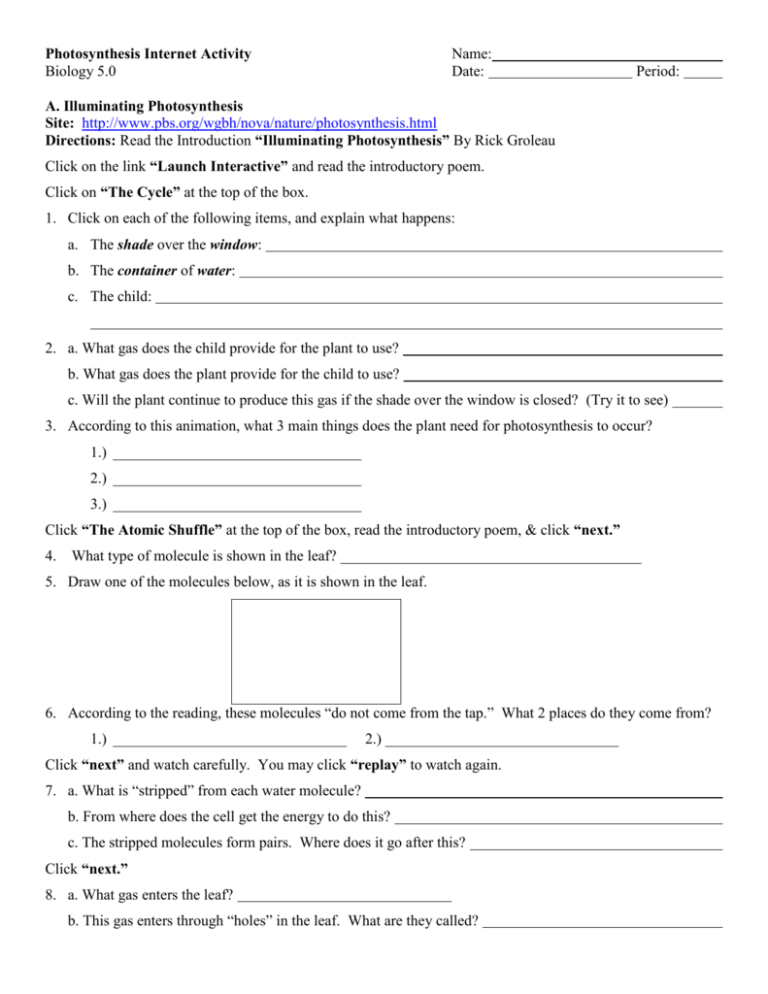
Photosynthesis Internet Activity Biology 5.0 Name: Date: Period: A. Illuminating Photosynthesis Site: http://www.pbs.org/wgbh/nova/nature/photosynthesis.html Directions: Read the Introduction “Illuminating Photosynthesis” By Rick Groleau Click on the link “Launch Interactive” and read the introductory poem. Click on “The Cycle” at the top of the box. 1. Click on each of the following items, and explain what happens: a. The shade over the window: b. The container of water: c. The child: 2. a. What gas does the child provide for the plant to use? b. What gas does the plant provide for the child to use? c. Will the plant continue to produce this gas if the shade over the window is closed? (Try it to see) 3. According to this animation, what 3 main things does the plant need for photosynthesis to occur? 1.) _________________________________ 2.) _________________________________ 3.) _________________________________ Click “The Atomic Shuffle” at the top of the box, read the introductory poem, & click “next.” 4. What type of molecule is shown in the leaf? ________________________________________ 5. Draw one of the molecules below, as it is shown in the leaf. 6. According to the reading, these molecules “do not come from the tap.” What 2 places do they come from? 1.) _______________________________ 2.) _______________________________ Click “next” and watch carefully. You may click “replay” to watch again. 7. a. What is “stripped” from each water molecule? b. From where does the cell get the energy to do this? c. The stripped molecules form pairs. Where does it go after this? Click “next.” 8. a. What gas enters the leaf? b. This gas enters through “holes” in the leaf. What are they called? Click “next.” 9. What molecule is formed once again? Click “next.” 10. Another molecule is formed (“and boy it is sweet”). Draw this molecule below as shown. 11. What is the name of this molecule? Click “Three Puzzlers” at the top of the box. 12. Answer each of the following questions, and explain in your own words. a. Can a tree produce enough oxygen to keep a person alive? Explain. b. Can a plant stay alive without light? c. Can a plant survive without oxygen? Explain. B. Factors that affect the rate of Photosynthesis Introduction: In this simulation, you will be looking at the production of oxygen as a plant photosynthesizes. This procedure can be accomplished by placing elodea plants in water with baking soda to provide carbon. The plant can then be exposed to varying intensities and colors of light. Oxygen is measured in the number of bubbles produced by the plant. This simulator addresses three factors that influence the rate of photosynthesis. Carbon dioxide availability, light intensity, and light color can all be adjusted in the simulator to determine how each of the factors affects the rate of photosynthesis. Site: http://www.saddleworth.oldham.sch.uk/science/simulations/waterweed.htm Directions: Using the tables below, set up an experiment to find the answer to the question. 1. You must have at least 4 runs for each experiment. 2. Make sure that you click x5 speed 3. Remember you should only have a SINGLE VARIABLE in each experiment. Pre-Lab Questions 1. In this investigation, how will you measure the rate of photosynthesis? 2. Why would this procedure not work with a terrestrial plant? Question 1: How does the color of light affect the rate of photosynthesis? Remember ONE VARIABLE. Hypothesis: Run Run 1 Run 2 Run 3 Run 4 Light Color CO2 Data Table 1 Light Filter Count Conclusions (Explain how your data relates to the process of photosynthesis): Question 2: How does the light level (intensity) affect the rate of photosynthesis? Remember ONE VARIABLE. Hypothesis: Run Light Color CO2 Data Table 2 Light Filter Count Run 1 Run 2 Run 3 Run 4 Conclusions (Explain how your data relates to the process of photosynthesis): Question 3: How does the amount of CO2 affect the rate of photosynthesis? Remember ONE VARIABLE. Hypothesis: Run Light Color CO2 Data Table 2 Light Filter Run 1 Run 2 Run 3 Run 4 Conclusions (Explain how your data relates to the process of photosynthesis): Count




